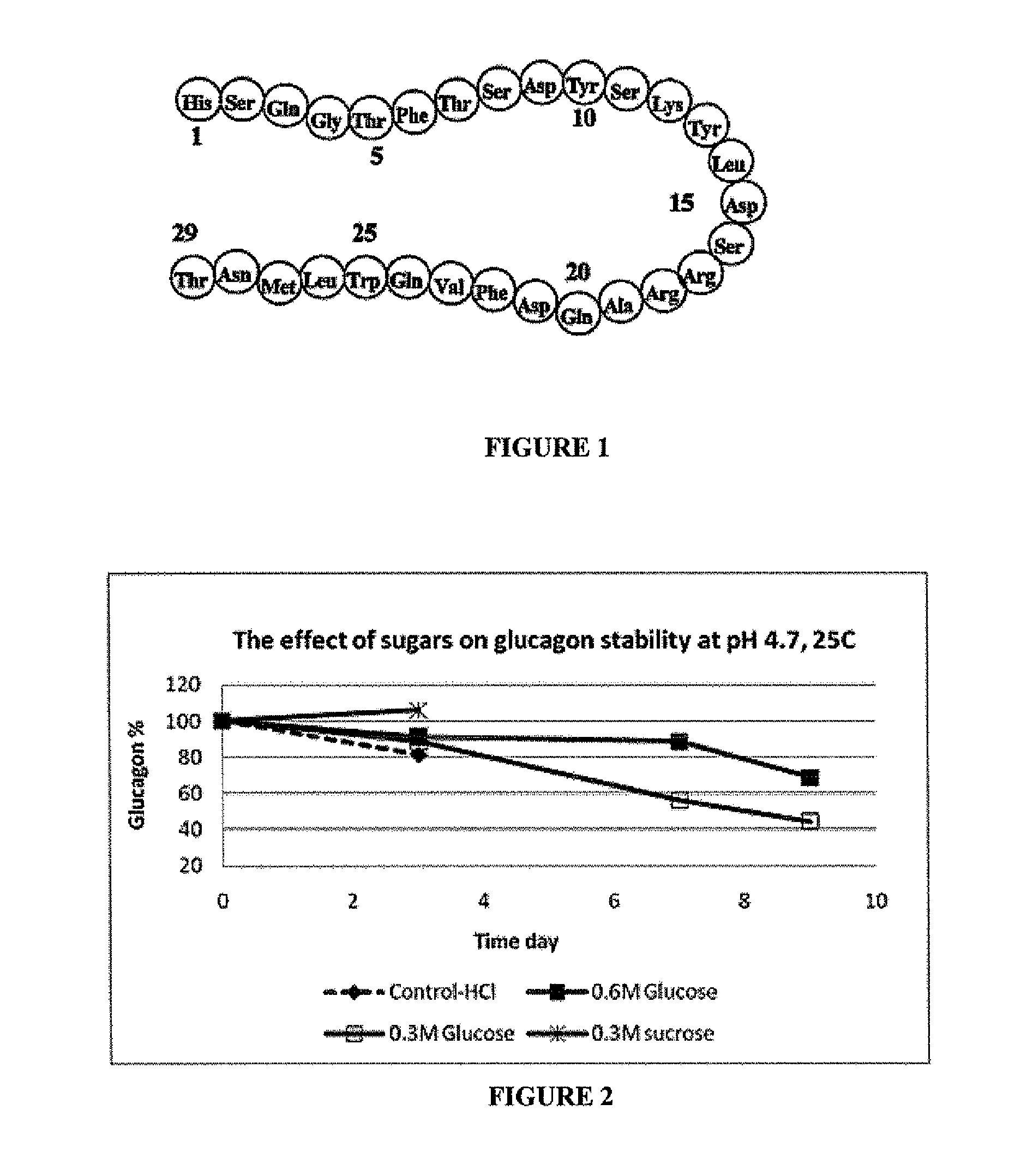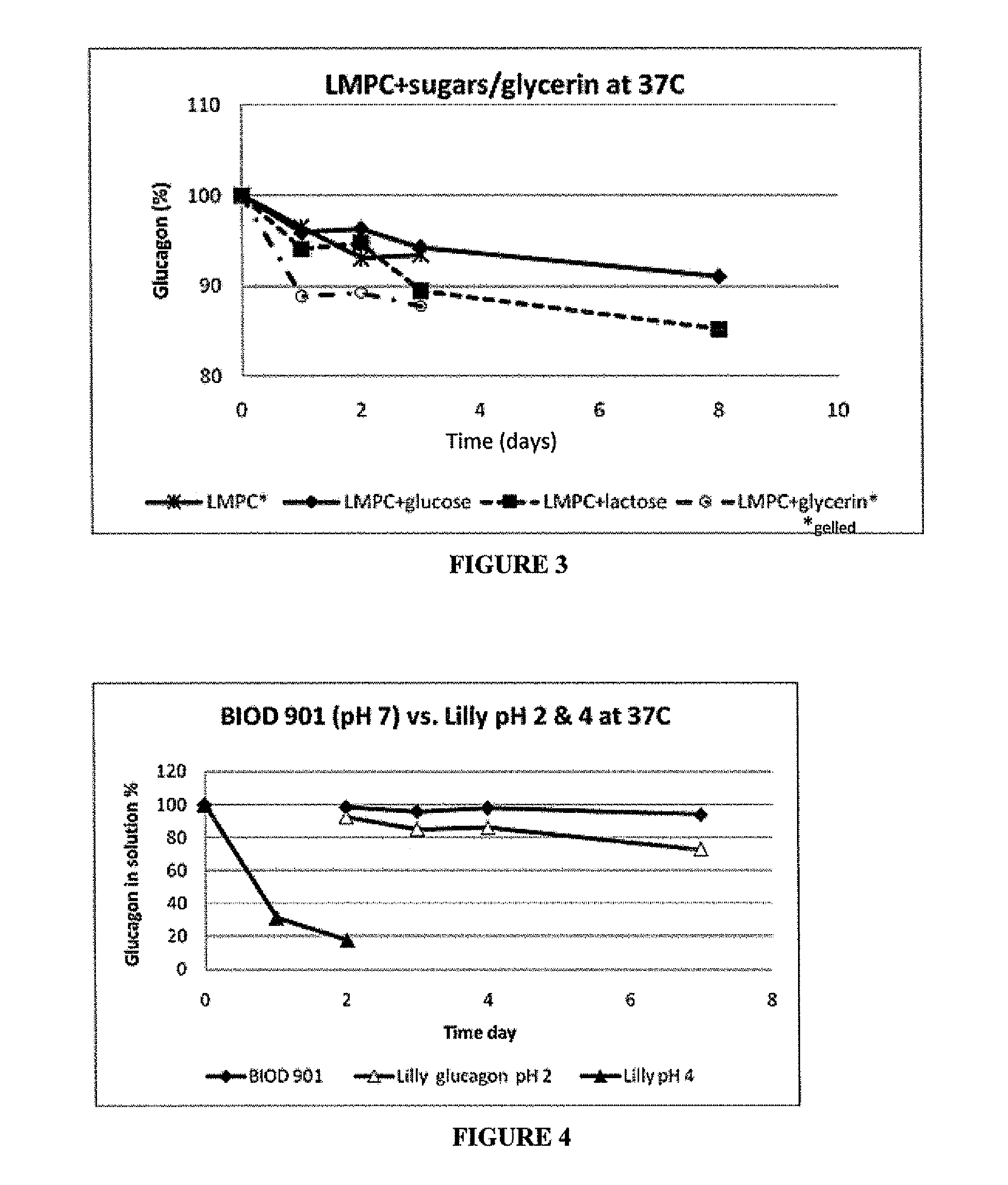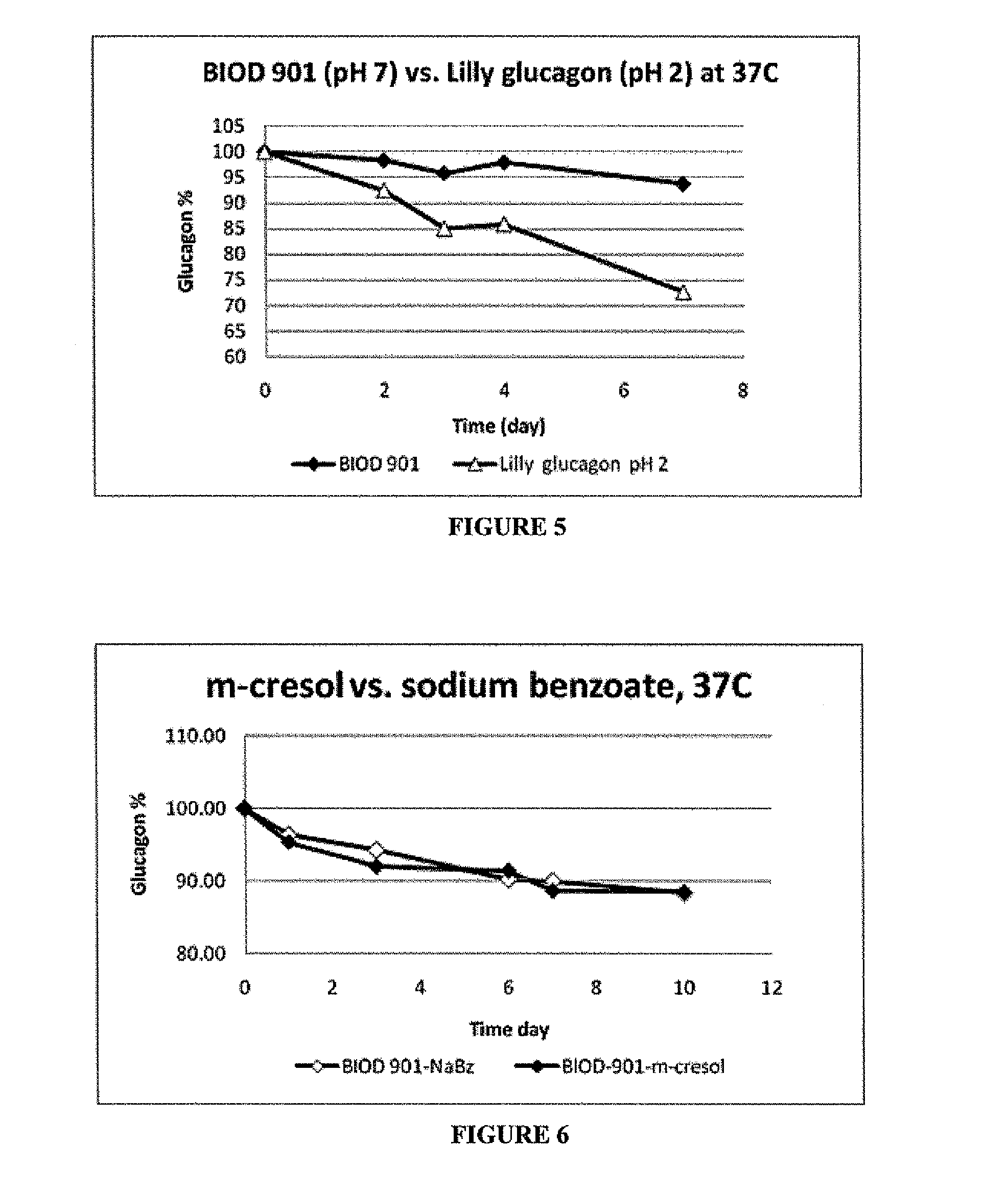Stabilized glucagon solutions
a technology of glucagon and solution, applied in the field of stabilized glucagon solutions, can solve the problems of loss of biological activity, formulations that are not capable of fulfilling the need, and cannot prevent hypoglycemia, so as to prevent gelation for extended periods of time
- Summary
- Abstract
- Description
- Claims
- Application Information
AI Technical Summary
Benefits of technology
Problems solved by technology
Method used
Image
Examples
example 1
Simple Sugars for Glucagon Stabilization
[0055]While LMPC is known to improve solubility and stability of glucagon, its use alone with glucagon did not prevent gelation. Prevention of gelation and fibrils is critical since it is possible that cytotoxic amyloidogenic fibrils can form with glucagon (Onoue, S et al., Pharm. Res. 21 p. 1274-1283, 2004), which would make it unsuitable for use in a bihormonal pump or other uses. Therefore, other excipients were tested for their ability to prevent glucagon depredation and gelation. The purpose of this study was to evaluate two sugars, glucose and sucrose, for their effect on stabilizing glucagon.
Materials and Methods
[0056]This study compared glucagon stabilization with sucrose and glucose at different concentrations at pH 4.7, 25° C. Glucagon solutions were prepared to a concentration of approximately 1 mg / mL and mixed to a final concentration with either (1) HCl (control), (2) 0.6M glucose, (3) 0.3M glucose, or (4) 0.3M sucrose.
[0057]Resul...
example 2
Studies Showing the Effect of Different Sugars on the Stability of Glucagon in Combination with LMPC
[0061]Materials and Methods
[0062]To further optimize stability during storage, the glucagon was formulated with LMPC in combination with one of several sugars to determine whether the formulation stability could be extended beyond the original glucagon / glucose formulation shown in FIG. 2. The sugars were lactose (90 mg / mL), glucose (45 mg / mL) and glycerin (23 mg / mL). The test sugar+LMPC formulations were compared to LMPC (2 mg / mL) alone following incubation at 37° C. over a period of days.
[0063]Results
[0064]The results are shown in FIG. 3. This study found that glucagon with LMPC and glycerin and glucagon and LMPC alone gelled by day six. Lactose and glucose remained in solution to day 8. However, though these were not observed to gel, the glucose was more effective at chemical stabilization of glucagon than lactose. Therefore, glucose in conjunction with LMPC is the preferred combina...
example 3
Development of a Stable Glucagon Formulation for Use in Bihormonal Pumps
[0065]The purpose of this study was to add an antibacterial agent to the stabilized glucagon formulation to make it suitable for use with a bihormonal pump (artificial pancreas) at physiological temperatures. Other considerations for pump use include the solution being free of any large particulate matter, gels or fibrils for at least 5 days at 37° C. for the pump to accurately deliver glucagon to the injection site. Also, since the patient is continuously subject to the infusion, the pH of the formulation should be in the pH range of 4-8 to avoid site discomfort. Commercially available formulations of glucagon are not intended for pump use. They are only intended for a single rescue dose of 1 mg and therefore are prepared at a very low pH of approximately 2. These rescue formulations come in a kit containing a lyophilized glucagon powder and a diluent in a separate bottle. These must be combined before use and ...
PUM
| Property | Measurement | Unit |
|---|---|---|
| osmolarity | aaaaa | aaaaa |
| osmolarity | aaaaa | aaaaa |
| concentration | aaaaa | aaaaa |
Abstract
Description
Claims
Application Information
 Login to View More
Login to View More - R&D
- Intellectual Property
- Life Sciences
- Materials
- Tech Scout
- Unparalleled Data Quality
- Higher Quality Content
- 60% Fewer Hallucinations
Browse by: Latest US Patents, China's latest patents, Technical Efficacy Thesaurus, Application Domain, Technology Topic, Popular Technical Reports.
© 2025 PatSnap. All rights reserved.Legal|Privacy policy|Modern Slavery Act Transparency Statement|Sitemap|About US| Contact US: help@patsnap.com



